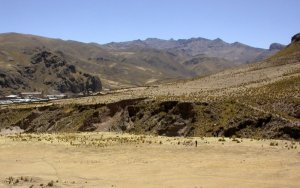Workshop 2009, No. 1 - Viewshed and Cost Distance
Archaeological Research Facility at UC Berkeley
PRACTICAL WORKSHOP
Working with Archaeological data in Arcmap 9.2:
A brief tour of Viewshed and Cost distance functions
Friday Mar 5, 2009
by N. Tripcevich
Overview of Workshop
Viewshed AnalysisA viewshed is the area of land visible from a given location. While single-site viewshed analysis is not substantially better than personally standing at a location and looking around, the computational advantage of viewshed analysis (or cumulative viewshed analysis), arises when you can investigate general trends of site intervisibility across dozens or hundreds of archaeological site locations. |
 |
We can pose questions such as "What archaeological sites or landscape features are visible from a given location?", "Were sites located so as to be able to monitor a greater number of other sites during times of conflict?", and "Does a particular type of archaeological site have a larger than average viewshed?". Uncertainties about past vegetation (was there a forest to block the view?) limit the applicability of viewshed analysis in some regions of the world, however it remains a useful tool for bringing our cartographic knowledge of archaeological settlement patterns closer to the subjective experience of ancient peoples and their landscapes.
Cost-Distance Analysis
- We're using Point vectors (shapefile or Geodatabase) with one nominal attribute that, in our case, differentiates the locations into three time periods.
- You need a topographic surface (DEM) in the same coordinate system and projection as the point layer.
- Most importantly, these layers need to be projected into a coordinate system based on meters or feet (such as UTM or State Plane), and not based on Degrees (Latitude/Longitude) because distance calculations cannot be correctly performed in angular units of degrees.
Sources of DEM data: local government mapping agencies maybe your best source of DEM data. If local agencies do not provide DEM data you may use SRTM data (30m resolution in the US, 90m internationally), CGIAR serves SRTM data with the holes filled. The example provided here is based on 30m ASTER DEM data in Peru using the UTM coordinate system.
